Video marketing has evolved into one of the most important aspects to consider for your content marketing strategy. Whether it’s a 30-second ad, vlog, or live footage, featured videos in your content are one of the most popular and effective ways to engage your audience.
In fact, video is preferred by 80% of people over written text and is already being used by 87% of businesses as a marketing tool. Research also shows that 88% of consumers have been convinced by a marketing video to purchase products and services. The power of video is undeniable, and understanding the latest trends in video marketing is crucial for staying ahead of the curve in 2024.
1. Live Video
Live video skyrocketed in importance in 2020 as the pandemic put a halt on in-person events and experiences. It emerged as an essential way for brands to continue connecting with consumers, and today our outlook on what kind of content is “streamable” has been totally transformed. Live video is being used by everyone from influencers promoting products to music artists holding virtual concerts to Broadway companies streaming full-length productions.
For content marketers, live video should be at the top of the list of video marketing trends to follow in 2024. Even as life is getting back to normal, consumer demand for live video content isn’t going away—it’s growing. And while consumers prefer video content in general, they engage at a much higher rate when the content is live. On Facebook, for example, users watch live videos for 3x longer than pre-recorded videos, and live content generates 6x more interactions. Brands have an opportunity to build engagement and gain a competitive advantage by embracing live video right now.
2. Smartphone Production
Gone are the days when video marketing required expensive equipment and a big production budget. In fact, even brands that can afford those things are turning to smartphones to create more relatable, authentic content. Apple’s #ShotOniPhone campaign has proven that video content created on a smartphone can be indistinguishable from what we see in traditional media. Social media influencers have also excelled at creating high-quality smartphone video content, surpassing even seasoned video marketing professionals.
Brands are realizing that this type of real-life content resonates with consumers more than salesy ads. So if you’ve been thinking about creating more video content but worrying you might not have the equipment, here’s your sign: all you need is a little inspiration and the device in your hand.
3. Search-Optimized Videos
While SEO is nothing new, videos optimized for search are gaining traction as a powerful tool for improving search engine rankings. Videos are 53 times more likely to generate first-page rankings than other traditional SEO techniques. Google is now putting video snippets next to 26% of search results, and users are more likely to click them when they do. To optimize your videos for search, focus on relevance, consistency, and backend optimization.
Be sure your videos have a clear goal in mind, make them relevant to consumers by answering their questions and educating them on important topics related to your brand. Be consistent in creating video content frequently and always publish it on your website to boost traffic. Don’t forget important technical optimization steps like title tags, keywords in descriptions, choosing appropriate thumbnail images, and responding to comments to drive engagement.
4. Vlogs
Vlogs (or video blogs) are a great vehicle for brand storytelling, showcasing tutorials, or sharing product information. They provide an opportunity to create a human connection between your team members and your audience, showcase your brand personality, and keep consumers coming back for more of your content. Consumers have reported that watching a brand video has helped them make a purchase decision.
Vlogging is an effective, cost-efficient way to educate your audience about products and services. Individual creators have dominated the vlog content space, but brands should also consider leveraging this video marketing trend to connect with their audience and foster engagement.
5. Social Media Stories
Social media stories are a more casual and personal way to show your brand’s personality and create a connection with your audience. They offer various opportunities for interactive engagement, such as Q&A sessions, polls, and user-generated content. Social media stories have become a popular form of content, and brands can leverage this trend to share behind-the-scenes footage, product demonstrations, and customer testimonials. By incorporating social media stories into your video marketing strategy, you can keep your audience engaged and create a more authentic and personal connection with your community.
6. AR/VR/AI Videos
Augmented Reality (AR), Virtual Reality (VR), and Artificial Intelligence (AI) content have been around for a while but are now finding their way into mainstream video marketing trends. As technology becomes more accessible and consumers demand increasingly interactive content, AR, VR, and AI videos are becoming more prevalent. These immersive experiences have been used by brands to create virtual try-on experiences, self-guided diagnostics, and interactive educational content. While they may not replace in-person experiences entirely, AR, VR, and AI videos are here to stay as a key tactic for video marketers.
7. Silent Videos
With the rise of social media platforms and mobile browsing, many people watch videos without sound. As a result, silent videos are becoming increasingly popular. These videos are designed to convey information and tell a story without relying on audio. With strong visual elements, captions, and subtitles, silent videos can effectively engage viewers even in situations where sound may not be accessible or desirable. When creating video content, consider optimizing it for silent viewing to ensure maximum engagement and reach.
8. Personalized Video Experiences
Personalization is a powerful tool in marketing, and video is no exception. Personalized video experiences involve tailoring video content to the unique interests and preferences of each individual viewer. By leveraging advanced algorithms and data analytics, brands can create video content that resonates with their audience on a personal level. This approach enhances engagement, boosts brand loyalty, and ultimately leads to higher conversion rates. Personalized video experiences can be achieved through techniques such as dynamic content insertion, interactive elements, and customized recommendations based on user behavior and preferences.
Conclusion
As we look ahead to 2024, these video marketing trends will shape the way brands engage with their audience and drive business growth. By embracing live video, smartphone production, search optimization, vlogs, social media stories, AR/VR videos, silent videos, and personalized video experiences, brands can stay ahead of the curve and create meaningful connections with their target audience.
Video is a powerful medium that continues to evolve, and brands that leverage these trends will be well-positioned for success in the dynamic digital landscape. So don’t wait—start incorporating these video marketing trends into your strategy today and elevate your brand’s video content in 2024 and beyond.
Article Source: Tim Ljunggren, LinkedIn
 It’s kind of like the saying: “You can polish a turd all you want, but in the end, it’s still a turd.” We don’t want you advertising a turd video.
It’s kind of like the saying: “You can polish a turd all you want, but in the end, it’s still a turd.” We don’t want you advertising a turd video.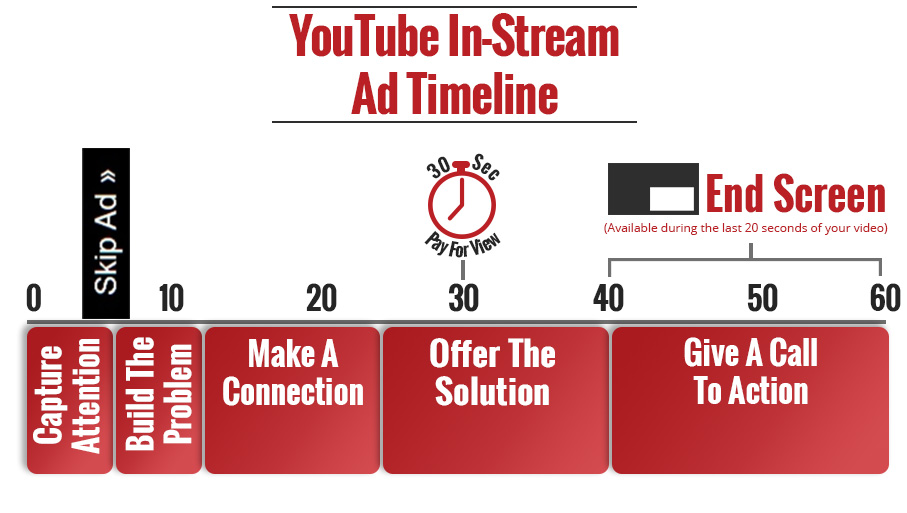
 Here you go. This is what you wanted to do right from the beginning. Now that your viewer knows that you understand their problem, they’re ready to hear the solution. Tell them. This is where you can talk about your product or service and all of its benefits.
Here you go. This is what you wanted to do right from the beginning. Now that your viewer knows that you understand their problem, they’re ready to hear the solution. Tell them. This is where you can talk about your product or service and all of its benefits.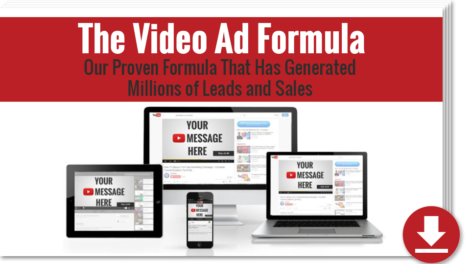 If you want to take your YouTube ads to the next level, download our “Video Ad Formula”. This free resource includes more useful tips, tools, and examples of how to make effective YouTube ads. You can download it for free by clicking the link below.
If you want to take your YouTube ads to the next level, download our “Video Ad Formula”. This free resource includes more useful tips, tools, and examples of how to make effective YouTube ads. You can download it for free by clicking the link below.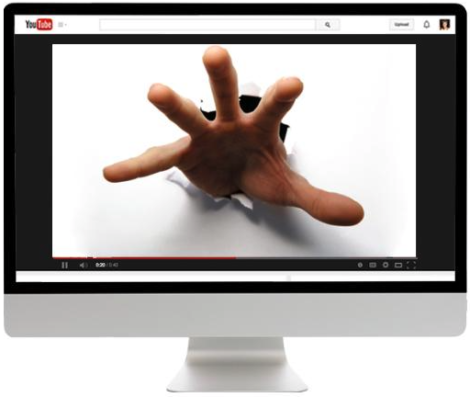 Once you know your audience, you can use our YouTube Ad Script Template to help you structure your answers into a script.
Once you know your audience, you can use our YouTube Ad Script Template to help you structure your answers into a script.
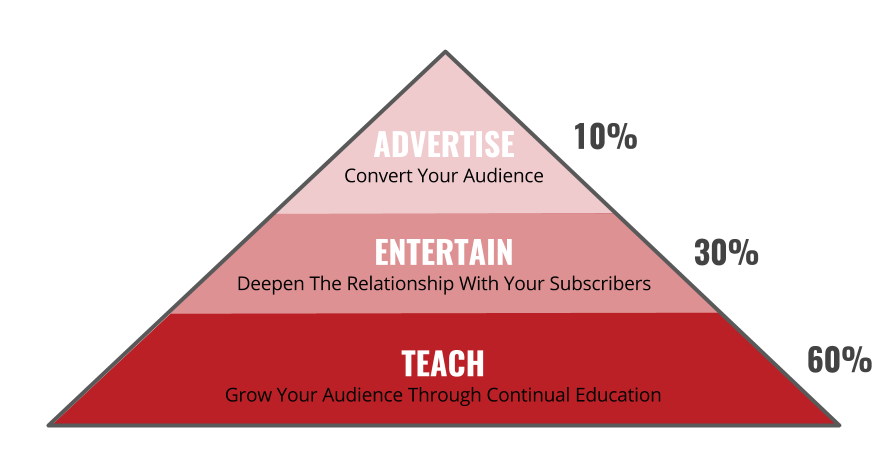

 That alone gives you 5-10 good ideas for new videos that you can create. Not only this, but it will also help you know specifically how you should be titling your videos, which is also important.
That alone gives you 5-10 good ideas for new videos that you can create. Not only this, but it will also help you know specifically how you should be titling your videos, which is also important.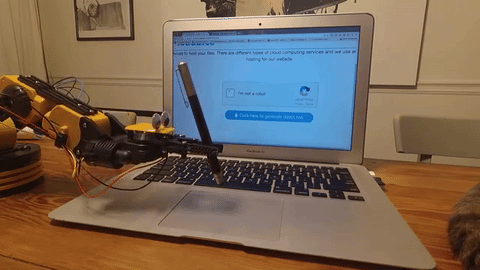
 My family and I decided that we wanted to start a family YouTube Channel. In talking to some friends who are currently on YouTube, we heard that it can take a long time of consistently creating videos before you even start to build your subscriber base. Even with a solid video SEO strategy combined with creating daily videos it could take you 3-6 months before you’re starting to get some good engagement.
My family and I decided that we wanted to start a family YouTube Channel. In talking to some friends who are currently on YouTube, we heard that it can take a long time of consistently creating videos before you even start to build your subscriber base. Even with a solid video SEO strategy combined with creating daily videos it could take you 3-6 months before you’re starting to get some good engagement.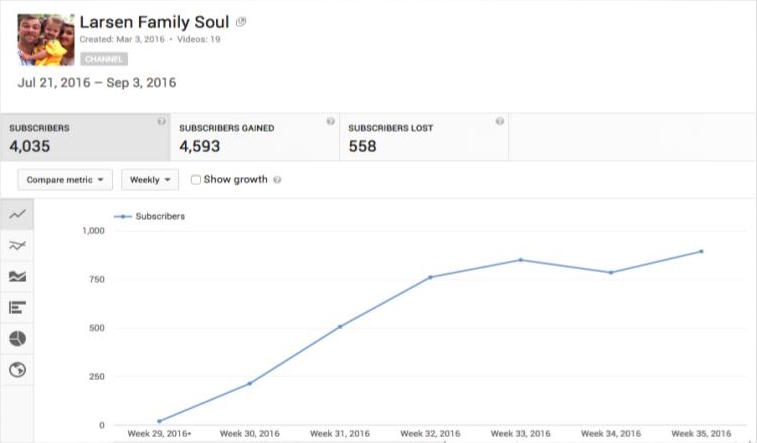 It was like turning on a fire hose! It was really cool to see our subscriber count shooting up and the comments people were leaving.
It was like turning on a fire hose! It was really cool to see our subscriber count shooting up and the comments people were leaving.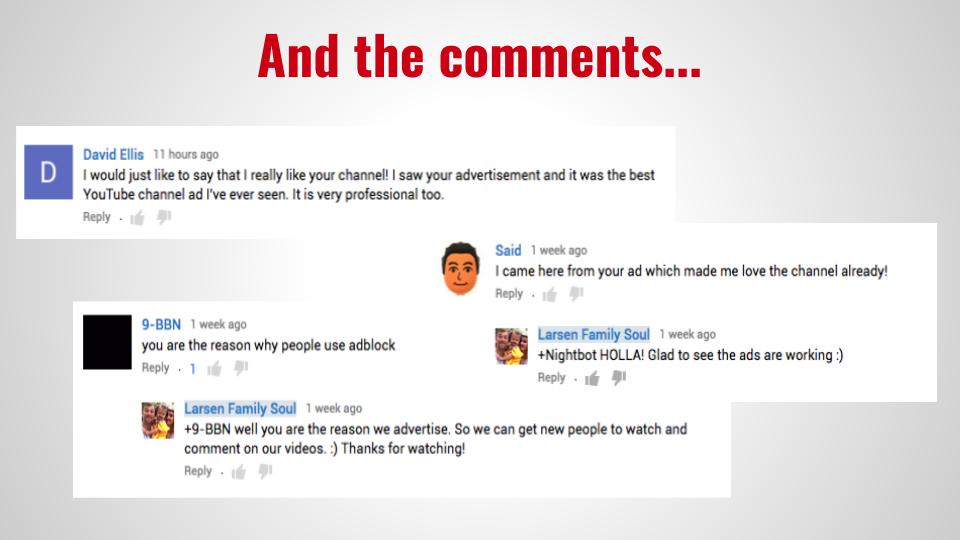 I’m totally fine with comments like this because YouTube awards your videos based on watch time and viewer engagement (good or bad). All 9-BBN is doing by leaving that comment is helping more people see our video organically.
I’m totally fine with comments like this because YouTube awards your videos based on watch time and viewer engagement (good or bad). All 9-BBN is doing by leaving that comment is helping more people see our video organically.